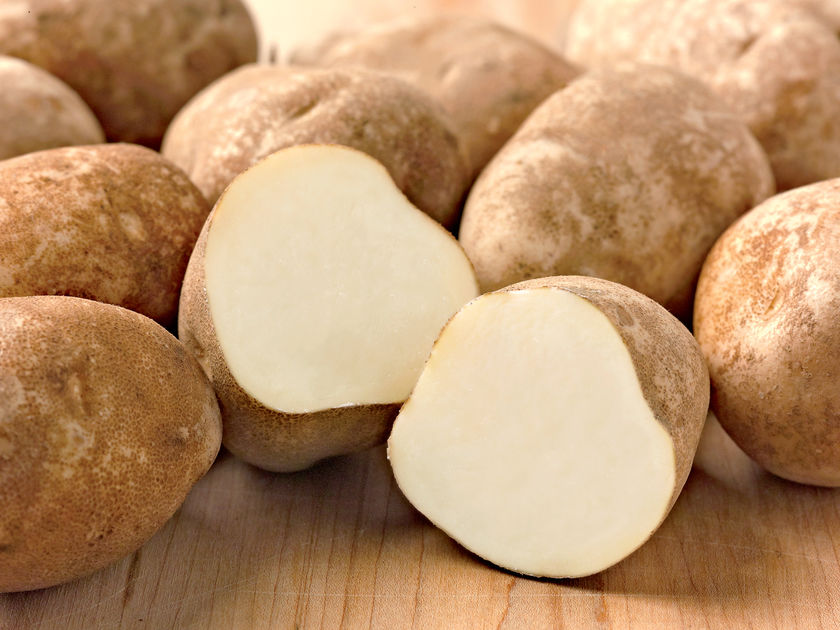
07 Apr Agronomy Update – April 7 – Seed Handling & Cutting
Hi everyone,
Needless to say, it’s a challenging time for everyone. The future is far from certain and everyone is carrying more stress than usual. That being said…spring will come, and it will soon be time to get the 2020 crop in the ground. In that vein, I thought it would be good to pass along a few reminders when it comes to seed handling and seed cutting this spring.
Seed Handling/Cutting Factsheet (PDF)
In the 2 page factsheet linked above, you’ll find some helpful hints regarding seed handling and seed cutting coming from a workshop with Steve Holland from 2017, but most of these guidelines are timeless. Topics include:
– Managing seed for optimum yield potential
– Preparing for seed cutting
– Seed cutter maintenance and calibration
– Bruise reduction
– Avoiding seed piece decay through treatment
Seed Piece Decay/Blackleg:
In the last couple of years, I’ve been hearing more from growers about issues they’ve had in the last couple of years with seed piece decay and blackleg. Some newer varieties that have become more popular in recent years appear to be more susceptible to blackleg or seed piece decay.
One newer practice that I know some growers are adopting is installing spray bars on their set cutters to continually apply disinfectant to cutting knives in an effort to prevent the spread of blackleg (Pectobacterium spp.) and other soft rot pathogens. This can also help prevent the spread of other seed-borne diseases such as PVY.
Some specific best management practices for seed cutting to prevent the spread of soft-rot/blackleg pathogens:
- Use clean seed and store in a disinfected facility. Try to avoid cutting in a storage previously treated with CIPC.
- Warm seed tubers prior to cutting to promote rapid healing and prevent jagged cut edges.
- Remove diseased tubers prior to cutting to prevent disease spread in the seed lot.
- Disinfect cutting and handling equipment often, and ensure that knives are sharp to make clean cuts that heal quickly.
- Use a registered fungicide seed treatment on cut seed. Mancozeb and new liquid treatments (Cruiser Maxx, Titan Emesto) have proven effective on all Fusarium strains on PEI.
- Seed disease diagnostic tools are locally available!
- Reducing seed wetness is key to managing decay caused by soft-rot bacteria. Seed treatments will not control bacteria, and it’s important to use a drying agent if using a fungicide seed treatment. Stick to label rates and water volumes, and store seed in a well-ventilated pile (not too high). Avoid “caking,” which can create an anaerobic environment which promotes bacterial growth.
For questions related to seed piece pesticide application, consult the PEIDAL applicator manual (PDF).
Also be sure to keep an eye out for blackleg during crop scouting/rogueing during the crop season. Some strains of blackleg that are increasingly prevalent appear more able to last through the growing season, producing viable tubers to infect next year’s seed crop.
REMEMBER: Seed issues last all year and limit yield no matter what the growing season brings. Take all efforts to eliminate the spread of disease in your seed lot through grading and proper disinfection.
This also extends to planting, where proper seeding rate, accuracy of seed placement, and spacing according to seed piece size will make a huge difference to your yield potential.
I have talked with some growers that are looking at sizing out their whole seed pieces from their cut seed and planting those separately. Note that whole seed can normally be planted in cooler soil than cut seed and is less susceptible to seed piece decay. Whole seed pieces also will normally produce a larger number of stems than a cut seed piece, so this may require slight adjustments to spacing to account for stem number and desired tuber set.
All the best to everyone as they start bringing home seed and preparing for the planting season. Feel free to reach out to me if you have questions or are interested in any research trials this season.
Ryan
